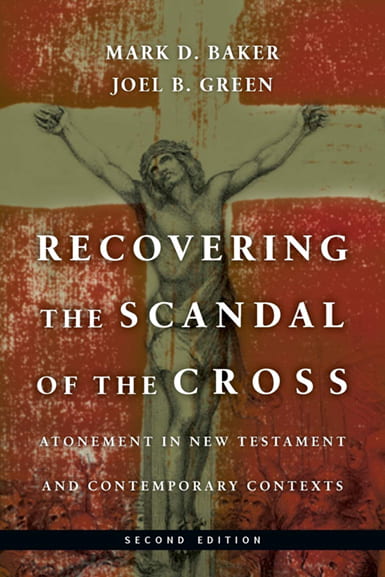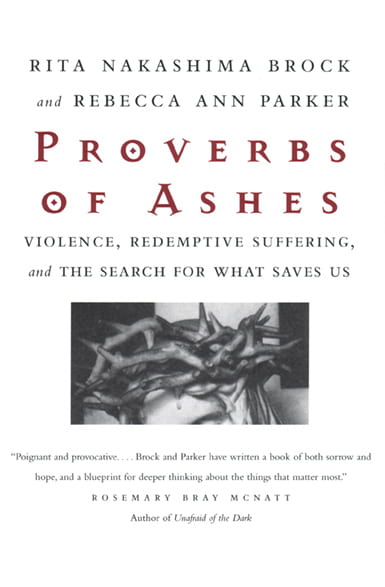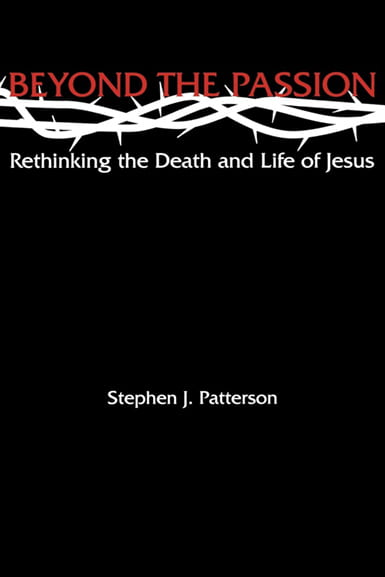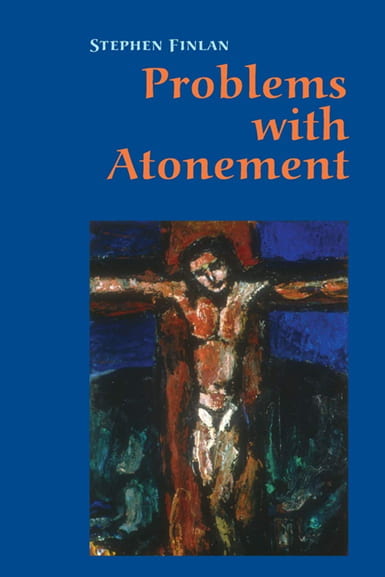
In Review
Cross Purposes
By Matthew M. Boulton
If Christianity is about anything, it is about the “salvation” Christians proclaim on Easter morning. And yet, despite this fact—or, more likely, partly because of it—no single Christian theory of “salvation” has ever been authorized above others by, say, an ecumenical church council. The Holy Trinity, the divinity and humanity of Christ, the proper veneration of images—on each of these doctrinal questions, and on many others, ecumenical councils have seen fit to close theological ranks, thereby producing both “orthodoxy” and its attendant “heresies.” But no such council has ever called, much less settled, the question of “salvation.” And so, perhaps surprisingly, at the very heart of Christianity is a remarkable plurality of opinion, and an unfolding, lively conversation.
In other words, there is no single, definitive, orthodox Christian idea about what is arguably the most important theme in Christian life. When it comes to salvation, there is instead an open, ongoing Christian discussion, full of passionate claims, intellectual experiments, and pointed debate. In this sense, then, the center around which Christian thought revolves is not a shining, settled answer, but rather a longstanding, unsettled argument. And that argument begins—in the New Testament.
It is a complicated conversation, even at the outset. Indeed, the history of Christian thought about the Passion, death, and Resurrection of Jesus Christ is not the history of a single ray of scriptural light eventually refracting into a spectrum of theological interpretations, but rather a history of multiple interpretations in the first place: Mark’s Passion narrative, for example, is a harrowing tale of abandonment, first by disciples, and finally by God; Luke’s is a meditation on mercy in the face of violence; and John’s is a story of a sovereign, deliberate act of “laying down one’s life for one’s friends.” Much as Christians try, consciously and unconsciously, to collapse these narratives into one another, or to “harmonize” them into some larger symphony, the fact remains that each gospel tells a very different story, different in texture, theme, and detail. At times, these stories are plainly irreconcilable. And at times, they seem to do battle: we do not know, for example, whether the author of John was familiar with Jesus’ Gethsemane prayer in Matthew, Mark, and Luke, the anguished cry for God to “remove this cup from me,” but when John’s Jesus al-most scornfully declares, “Now my heart is troubled—and what shall I say? ‘Father, save me from this hour?’ No, it was for this very reason I came to this hour. ‘Father, glorify your name!,’ ” the implicit rebuke of the synoptic tradition on this point could hardly be more clear (John 12:27–28). At the very least, here is a rather keen intracanonical “disagreement,” and explaining away such disagreements between gospels means losing touch with each of them in their particularity. Interpreters of Christian scripture cannot recall too often that the New Testament begins with not one gospel, one portrait of Jesus of Nazareth, one Passion narrative, one account of Christian “salvation,” but four.
To navigate this territory, there is no better guide than the late Raymond E. Brown, arguably the most distinguished New Testament scholar of our time. His magisterial two-volume commentary on the four canonical Passion narratives, The Death of the Messiah, runs to more than 1,600 pages—but in his little masterpiece, A Crucified Christ in Holy Week: Essays on the Four Passion Narratives (Liturgical Press, 1986), Father Brown boils down the key insights of that larger work into a crisp 71 pages of accessible, engaging prose. And likewise, Brown’s A Risen Christ in Eastertime (Liturgical Press, 1991) is a 95-page distillation of his substantial research on the canonical Resurrection stories.
In both of these books, Brown’s central claim is disarmingly simple: each gospel presents a distinctive “portrait” of “the crucified Christ” on the one hand, and “the risen Christ” on the other, a kind of diptych that itself presents that gospel’s distinctive view of “salvation.” These views differ markedly. They resist “harmonization.” And so we de-emphasize their variety only at the risk of distortion and misunderstanding—or, to put things more positively, as Brown typically does, constructively exploring and highlighting the variety among the canonical gospels will likely lead to better reading, and deeper understanding. “It is as if one walks around a large diamond,” Brown writes, viewing it from “different angles,” such that a “true picture of the whole emerges only because the viewpoints are different.” Thus, for Brown, Christian gospels are like the images in an old-fashioned stereoscope: it is precisely the difference between the images that makes possible a perception of depth and liveliness, and so such diversity must be preserved and underscored.

Recovering the Scandal of the Cross
And yet at just this point, we may raise a fundamental, critical question for Brown’s approach. His basic metaphor of “walking around a large diamond” involves the idea that, like the old fable’s blind men around an elephant, the gospels differ only because they actually describe different aspects of Jesus, or of “salvation,” or of the purposes of the cross, and so that from a more comprehensive viewpoint (from which we may see the entire “elephant” or “diamond”), their differences are revealed to be complementary. In this way, even as Brown protests against simpleminded “harmonization” of the gospels, he nevertheless projects another kind of harmonization, metaphorically implying that the important differences between, say, the Gospel of Mark and the Gospel of John are, at bottom, merely perspectival. In other words, the diamond metaphor suggests that there are no genuine disagreements between the canonical gospels (or at least no important ones), but rather only apparent disagreements, resolvable once the “true picture of the whole emerges.” And this suggestion underpins not only this key metaphor, but Brown’s entire approach.
Much of the diversity between Matthew, Mark, Luke, and John can be plausibly understood this way. If Matthew claims that Jesus in Gethsemane is “grieved and agitated” (Matthew 26:37), for example, while Luke reports that Jesus’ “sweat became like great drops of blood falling on the ground” (Luke 22:44), it is perfectly credible to interpret both gospels as dramatizing the same scene “from different angles.” But on the other hand, if Mark claims that Jesus prays three times for God to “remove this cup from me,” but John reports that Jesus explicitly rejects the very idea of such a prayer—can these accounts be read convincingly as “different angles” on the same subject matter? Or again, in Matthew and Mark, Jesus’ last words before death are a cry of loneliness and despair: “My God, my God, why have you forsaken me?” (Matthew 27:46; Mark 15:34); but Luke, who likely knew of this tradition, conspicuously leaves it to one side, instead painting a picture of perfect intimacy between Jesus and God the Father: “Then Jesus, crying with a loud voice, said, ‘Father, into your hands I commend my spirit.’ Having said this, he breathed his last” (Luke 23:46). Similar differences, both great and small, can be listed indefinitely: in Mark, Judas kisses Jesus to identify him; in Luke, there is no kiss, but only an approach; in John, Jesus dies on the cross in the company of his mother, his aunt, Mary Magdalene, and “the disciple whom he loved” (John 19:25–26); in Matthew, Jesus dies alone, surrounded only by enemies. And so on.

Saving Power
Reading these texts as carefully as we can, then, we may well question whether they suggest—or even allow—the idea of a single “large diamond” viewed from four different vantage points. Indeed, on the contrary, close reading of the New Testament gospels brings to mind other metaphors: four “witnesses” in a courtroom, for example, with four distinctive versions of events and their significance, each ascending the witness stand one at a time; or four family members at a memorial service, each with a distinctive story to tell at the podium that best captures, they claim, the essence of the dearly departed. Or, perhaps best of all, we may imagine four painters, playwrights, or songwriters, each with a distinctive work of art designed to frame, illustrate, and interpret its subject. In contrast to the diamond metaphor, each of these figures accommodates the idea that there are genuine disagreements between gospels over important details, emphases, and overall meaning: these four accounts may be complementary in certain respects, but they are nonetheless contrary in others.
Put another way, the more carefully we attend to the genuine disagreements between the canonical gospels, the more we are led to reconceive how “canon” and “scripture” work in the first place. As an authorized collection of alternative, conflicting versions of events, “canonical scripture” is fundamentally dialogical, conversational, and argumentative, more like a gallery of disparate, sometimes competing masterpieces than a single, self-consistent line of thought. And please note, conceiving Christian scripture this way need not detach it from traditional theological ideas about divine “inspiration” and scriptural “authority”—for who is to say, after all, that the Holy Spirit’s mode of life is not rather like being a curator of an exhibition, a collector of “inspired,” though substantively quite different, works of art? Or that cultural and moral “authority” cannot take the concrete form of a celebrated museum (as indeed it often does in today’s social and political life)?
And so for Christians today, the debate about Jesus Christ and “salvation” begins in the opening pages of the New Testament, with an exhibit of four homiletic narratives. They do not in any simple sense “agree” with one another about how to answer such key questions as “Saved from what?” “Saved to what?” or “Saved how?”—but “agreement” is hardly the point, for it would be a poor exhibition indeed that lacked genuine difference, tension, and therefore conversation among its pieces. Rather, the point is to variously engage a varied public, and so the diversity among the four gospels is itself a pastoral strategy par excellence. And second, the point is to extend the four-way canonical conversation out into the gallery halls, and then beyond them, into the world. A walk through this exhibition, then, is at once an immersion in an ongoing debate, and an invitation to join it. Accordingly, Christians have been interpreting and reinterpreting “salvation” ever since the gallery opened—and in recent years, the conversation has taken some interesting turns.

Proverbs of Ashes
Since 2000, a flurry of new books on Christian “atonement” theologies have appeared, most of them in some measure unhappy with the fact that for many Christians in the West today (and many non-Christians, besides), Christian “salvation” is synonymous with a “substitution” doctrine akin to the one Anselm of Canterbury popularized in the eleventh century: that is, the idea that by suffering and dying “in humanity’s place,” Jesus Christ thereby “satisfies” a divine requirement on our behalf. Anselm framed his account in the feudal terms of his day, and later Christians developed substitutionary ideas by focusing more explicitly on punishment, contending that on the cross, Jesus bore the penalty for human sin. This so-called “penal substitution” atonement theory, which thus locates the fulcrum of salvation in Jesus’ suffering and death, has gained such prominence in the West today that many understand it to be the Christian view of the cross. And so among recent theological critics, a good number are principally interested in pointing out that “penal substitution” is but one atonement theory among others, and that Christian ideas about “salvation” become distorted if “punishment” is the only watchword.
Joel B. Green and Mark D. Baker, for example, aim to recapture some of the New Testament’s theological diversity on “salvation” in their accessible, lively book, Recovering the Scandal of the Cross: Atonement in New Testament and Contemporary Contexts (Intervarsity Press, 2000), a text all the more interesting for its relatively “evangelical” starting point. And Peter Schmiechen, in his more scholarly, technical text, Saving Power: Theories of Atonement and Forms of the Church (Eerdmans, 2005), lays out no less than 10 alternative theologies of atonement, each as venerable as Anselm’s. Like Brown, these authors think in terms similar to the “diamond” metaphor: though by no means uncritical of the theoretical alternatives they outline, in the end they insist that each theory has its own peculiar advantages, and, most fundamentally, that the Christian cross is irreducible to any one of them. “Not one, but many” is the clarion cry, and these texts do help provide a sense of the breadth and range of Christian theological thinking about the cross.

The Nonviolent Atonement
Other recent critics, however, have been less irenic about “substitution” theory. Rita Nakashima Brock and Rebecca Ann Parker’s Proverbs of Ashes: Violence, Redemptive Suffering, and the Search for What Saves Us (Beacon Press, 2001), for example, is an outright attack on the idea, charging that it encourages Christians—and in particular, women—to accept, prolong, or even seek suffering as an imitation of Christ. For Brock and Parker, today’s pressing theological task is not so much to reinterpret the cross as redemptive somehow other than as “penal substitution,” but rather to detach “redemption” and “the cross” altogether in Christian thought. In The Nonviolent Atonement (Eerdmans, 2001), Mennonite thinker J. Denny Weaver is sympathetic to this critique, but contends that a nonviolent theology of the cross is still possible in a form he calls “narrative Christus Victor.” The crucifixion of Jesus Christ, Weaver argues, far from an event of redemptive suffering, is instead a culminating episode of the whole gospel narrative, the story of Jesus continually confronting and indicting the “rule of evil” in his day—and in ours. Thus, for Weaver, by submitting to crucifixion, Jesus continues his work of heralding and demonstrating the nonviolent “rule of God,” and by rising from the dead, he signals once and for all that God’s rule will be victorious over the violent, death-dealing powers that be. In Weaver’s view, Christian “salvation” is not salvation through violence, but rather salvation from it.
Finally, I want to suggest two other recent books on the Christian cross, both grounded in the diversity of Christian scripture on “salvation,” and both aiming to steer the Christian conversation about “salvation” against the very idea of “atonement” itself. In Beyond the Passion: Rethinking the Death and Life of Jesus (Augsburg Fortress, 2004), the New Testament scholar Stephen J. Patterson argues that for most early Christians, and ideally for Christians today, the death of Jesus was and is important only insofar as it points to the life of Jesus, which Patterson understands as a life lived against the Pax Romana (and the Pax Americana) and for society’s marginalized and forgotten. How might a death do this? First, because Jesus’ death is the death of a victim, and in particular a victim of imperial brutality, it points to Jesus’ life as a life of resistance to earthly empires, in solidarity with victims everywhere. Second, because Jesus’ death is the death of a martyr, it points to Jesus’ life as a life of passionate, courageous commitment to “God’s new empire” of mercy and justice, a cause worth dying for, to be sure, but in the first place a cause worth living for, even in the face of strong opposition. And third, because Jesus’ death is a sacrifice, as the author of the Book of Hebrews puts it, it points to Jesus’ life as a life of fidelity not to the Roman emperor, whose elaborate sacrificial system served as what Patterson calls the “glue” that held Roman society together, but rather to God in Jesus Christ, whose “once and for all” death effectively frees Christians from all other sacrificial obligations.
Being a “Christian,” for Patterson, thus means following Jesus into this form of life, this courageous, creative opposition to imperial and cultic structures of domination. At first glance, of course, crucifixion seems to be the perfect victory of these structures over Jesus—but for just this reason, Jesus’ Resurrection pictures the perfect and preeminent victory of God. “Resurrection is vindication,” Patterson writes, which is not to say that Jesus’ Resurrection is itself some kind of cosmic turning point in the battle against demonic power, but rather that it decisively lifts up the life and cause of Jesus, endorsing them as the life and cause for human beings to live out. In first-century Palestine, alleged resurrection was quite familiar, the sort of thing that supposedly happened to emperors, for example. What was “news” about the Christian gospel was that this time, the one lifted up was not an emperor but a “nobody,” an obscure Jewish rabbi whose ministry is living and teaching a particular, countercultural way of life.

Beyond the Passion
Thus, for Patterson, “atonement” in its classical forms—“penal substitution,” “Christus Victor,” “moral influence,” and so on—are unnecessary and distorting doctrines, since they focus disproportionately on Jesus’ death as salvation’s pivot point, drawing attention away from the life and cause for which Jesus lived. Similarly, in Problems With Atonement (Liturgical Press, 2005), Stephen Finlan recommends jettisoning the “atonement” concept entirely from Christian theology, and turning instead to the saving effects of the Incarnation. For Finlan, the fundamental human predicament is not a vast debt we cannot pay, a death sentence we cannot dodge, or a stain of guilt we cannot remove; rather, it is a broken nature we cannot ourselves restore, and so a properly human situation—theosis, or “participation in divinity”—we cannot ourselves realize. Accordingly, Finlan contends that God’s work of salvation is to “foster spiritual growth and ethical progress” through the life and teachings of Jesus Christ—and that conventional Christian doctrines of “atonement” regrettably tend to reduce Jesus’ life to “nothing but a lengthy prologue.”
But what is perhaps most interesting about Finlan’s book is the way he treats the New Testament’s theological diversity on “salvation,” particularly in the writings of Paul. If Brown finds in each canonical gospel a distinct theological voice, Finlan finds in Paul a whole chorus of voices, some of them discordant, even within the same epistle. By no means a systematic theologian, and instead a resourceful, opportunistic preacher and church planter, Paul makes use of whatever local conceptual vehicles might help him make his case: now sacrificial, now martyrological, now legal, now economic, and so on. In this sense he is, as he himself puts it, “all things to all people” (1 Corinthians 9:22). But this leads to at least two problems for later Christian thinking about “atonement.”
First, since these various, locally driven conceptual vehicles do not always hold together very well, Paul’s writings are frequently muddled about the saving power of “Christ crucified.” For example, Finlan helpfully distinguishes between Ancient Near Eastern ideas of “sacrifice” on the one hand, and “scapegoat” on the other, concepts too often conflated in atonement theories today: in brief, across many Near Eastern religions, a “sacrifice” was typically a “pure” gift given to a deity, while a “scapegoat” was an animal ritually invested with the community’s “impurities and sin,” and then driven out into the wilderness, never to return. These ritual models are different enough, Finlan argues, that Paul’s combination of them—that is, his claim that Jesus is both “sacrifice” and “scapegoat”—is not altogether clear. As concrete appeals to specific readers familiar with these cultic models from other contexts, Paul’s letters may well have been rhetorically effective, but as a scriptural basis for more abstract, systematic reflection on Christian “salvation,” they are often problematic at best, and at worst, downright confusing.

Problems with Atonement
Second, Finlan contends that Paul’s rather adventurous mixing of metaphors within and across his epistles has pro-vided plenty of raw material for less talented thinkers to distort Christianity’s proclamation of “good news.” Time and again, Finlan laments, Christians have turned some passage in Paul—which for Paul was likely a daring, figurative flourish aimed at persuading a particular audience at a particular time—into an allegedly authoritative platform for a broad, crude theological position. Transactional theorists, for example, can and do point to Paul’s remarks that believers “were bought with a price” (1 Corinthians 6:20), that God “did not withhold his own Son” (Romans 8:32), and so on. In Finlan’s view, such theories do actually derive from Paul; his letters are a “seedbed” for both good and bad theological fruit. But they are nonetheless derivations that “exaggerate” and deform Paul’s thinking, calcifying inventive, experimental, mixed-up homiletical strategies into rigid, systematic statements, and so overlooking the ways in which Paul himself tempers his own rhetorical imagery, as one local metaphor gives way to another.
In the end, Finlan argues that the New Testament debate on “atonement” is just too problematic to salvage, and so Christians should resort to other theoretical frameworks—such as Incarnation and theosis—for understanding “salvation.” Here plurality means cacophony, he insists, and so the sheer diversity of Christian scripture on “atonement” ends up canceling the question. In other words, Finlan raises the provocative idea that when it comes to “atonement,” there may be many viewpoints represented in Christian scripture, many disagreements, many conversations—but there is no “diamond” there at all. Instead, as Finlan puts it, for insight into the true character of “salvation,” Christians are best sent back to Jesus, who quotes Hosea, who quotes God: “I desire steadfast love and not sacrifice” (Hosea 6:6; Matthew 12:7).
Matthew M. Boulton is Assistant Professor of Worship and Preaching at Andover Newton Theological Seminary, and is writing a book on the role of worship in the thought of Karl Barth and Martin Luther. In 2005–06 he was Visiting Assistant Professor of Homiletics and Preaching at HDS.
Please follow our Commentary Guidelines when engaging in discussion on this site.

